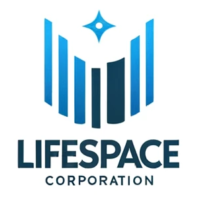Phase I Environmental Site Assessment (ESA) – Frequently Asked Questions
1. What is a Phase I Environmental Site Assessment (ESA)?
A Phase I Environmental Site Assessment (ESA) is a report prepared for a real estate holding that identifies potential or existing environmental contamination liabilities. It typically involves a review of records, a site inspection, and interviews with owners, occupants, neighbors, and local government officials.
2. Why is a Phase I ESA important?
A Phase I ESA is important because it helps to identify any environmental issues that could impact the value or usability of a property. It is often required by lenders as part of the due diligence process in property transactions to ensure there are no hidden environmental risks.
3. Who typically needs a Phase I ESA?
A Phase I ESA is commonly needed by buyers, sellers, and lenders involved in commercial real estate transactions. It’s also required for government agencies and other entities as part of property acquisition or redevelopment projects.
4. What does the Phase I ESA process involve?
The Phase I ESA process typically includes:
- Records Review: Examining historical documents, maps, and other records related to the property.
- Site Inspection: A physical visit to the property to observe current conditions.
- Interviews: Discussions with current and past property owners, occupants, and local officials.
- Report Preparation: Compiling the findings into a detailed report outlining any recognized environmental conditions (RECs).
5. How long does it take to complete a Phase I ESA?
The duration of a Phase I ESA can vary but generally takes between two to four weeks, depending on the size and complexity of the property.
6. What happens if environmental concerns are found during a Phase I ESA?
If environmental concerns, also known as Recognized Environmental Conditions (RECs), are identified during a Phase I ESA, further investigation is typically recommended. This may include a Phase II ESA, which involves more in-depth sampling and analysis to determine the extent of contamination.
7. How much does a Phase I ESA cost?
The cost of a Phase I ESA can vary depending on the property’s size, location, and complexity. Prices generally range from $2,000 to $4,000, but larger or more complex properties may cost more.
8. What standards are followed in a Phase I ESA?
A Phase I ESA is usually conducted following the ASTM E1527 standard, which outlines the proper procedures and guidelines for such assessments. This standard is widely recognized and ensures the ESA meets legal and professional requirements.
9. Can a Phase I ESA be used for multiple properties?
No, a Phase I ESA is typically specific to one property or site. Each property must be assessed individually due to unique environmental factors and history.
10. How long is a Phase I ESA valid?
A Phase I ESA is generally considered valid for six months. After that period, it may need to be updated, especially if there have been changes to the property or surrounding area that could affect the environmental conditions.
11. Who conducts a Phase I ESA?
A Phase I ESA is usually conducted by environmental professionals with specific qualifications, including experience and knowledge of environmental regulations, geology, and site assessment procedures.
12. What are the limitations of a Phase I ESA?
While a Phase I ESA is thorough, it has limitations. It does not include sampling or testing for contamination (which is part of a Phase II ESA), and it may not uncover all potential environmental risks, especially those that are not apparent through records or visual inspection.
13. What are Recognized Environmental Conditions (RECs)?
Recognized Environmental Conditions (RECs) are the presence or likely presence of any hazardous substances or petroleum products on a property under conditions that indicate an existing release, a past release, or a material threat of a release into the environment.
14. What should I do if I need a Phase I ESA?
If you need a Phase I ESA, you should contact a qualified environmental consulting firm. They can provide a proposal outlining the scope of work, timeline, and costs associated with conducting the assessment.

Serving the USA Since 1985
Thanks!
Edward J. Devine
Lifespace Corporation
Ph. (585) 738-5080
Lifespace Corporation is also at www.ejdevine.com
